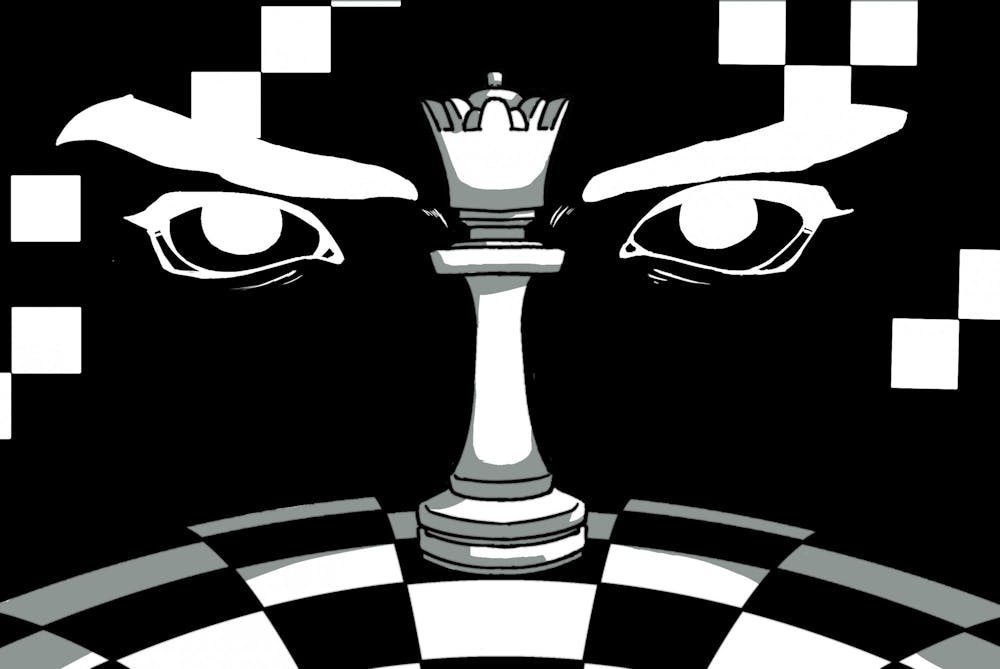“The Queen’s Gambit,” co-writer and director Scott Frank’s latest miniseries on Netflix, is the best movie or show I’ve seen released in 2020.
Granted, that statement doesn’t hold as much value in our world of COVID-19, a year where the production of films and shows were at a months-long standstill while movie theaters across the country were, and in some cases still are, shut down.
But even in a “normal” year, “The Queen’s Gambit” would have still shot up toward the top of my list. Its direction is too clever, production design is too thoughtful and performances are too powerful for it not to be.
“The Queen’s Gambit” is the story of a child named Beth Harmon, who after a tragic incident, falls in love with the game of chess. Eventually, as Harmon matures into young adulthood, she becomes one of the finest chess players in the world.
The show isn’t an original tale — it was adapted from a novel by Walter Tevis of the same name. But Frank, who owns screenwriting credits on highly regarded films such as “Logan," “Out of Sight” and “Minority Report,” adapts Tevis’ book as if it were his own story.
What makes Frank’s direction in the series so scintillating is his commitment to precision. Every camera movement is meant to convey a feeling and each vibrant costume choice points out something about a character. Even the position in which the audience sees a pawn move across the chess board isn’t made without thought.
Rarely have I seen a production design that's this vibrant and sharp mix in with the story so well. In a show that lacks dialogue, it’s the small visual choices that speak volumes.
But "The Queen's Gambit" still isn’t half as successful without Anya Taylor-Joy at the center — even with how meticulous Frank’s direction is.
Taylor-Joy is not an actress who needs speeches worth of dialogue to succeed. Through sheer presence and facial expressions, Taylor-Joy builds a deep and thoughtful character while simultaneously making chess fun to watch.
Her talent has always been apparent. Taylor-Joy's break-out performance in the film “The Witch” sent chills down my spine. But perhaps no character I've seen has fit her silent strengths as an actress better than Harmon.
Taylor-Joy’s brilliance isn’t met with mediocrity from her partners on-screen. Her foster mother in the show, played by director, writer and actor Marielle Heller, adds a contrasting tone to Harmon’s deeply obsessed and decisive presence in a mother-daughter relationship that I can’t find a comparison to.
Harmon’s prominent friends and chess acquaintances in the film, played by the likes of Thomas Brodie-Sangster, Harry Melling and Moses Ingram, each bring their own elements of likeness and contrast to Harmon’s brilliance. Their characters all build off of Harmon’s in a way that fleshes out her character and growth throughout the show.
It’s all brilliantly put together in Frank and Allan Scott’s script, a work of art that finds a perfect balance between its characters, story and themes of addiction, feminism and the trials and tribulations of being a young prodigy.
These themes mold the show's natural sports movie tendencies with its shiny prestige drama tag. And best of all, they present these ideas in an impactful, perfectly weighted and noticeably subtle manner.
By the show’s conclusion, my sadness was mostly trumped by a greater feeling of satisfaction. The show felt earned and refreshing even after making a tonal turn by the seventh and final episode. In fact, Frank is constantly throwing curveballs during the series’ 393-minute odyssey — with each twist never seeming unnecessary or forced.
“The Queen’s Gambit” is a monumental achievement in visual storytelling. From Frank’s direction and writing to Taylor-Joy’s performances, the show is captivating and subtle in more ways than one. It blends script with direction in an uncommonly seamless way.
Simply put, it’s the best thing I’ve seen in 2020.
Reach the reporter at kbriley@asu.edu and on Twitter @KokiRiley.
Like The State Press on Facebook and follow @statepress on Twitter.




